Can We Power a Space Mission To An Exoplanet?
Ion engines, solar sails, antimatter rockets, nuclear fusion—several current and future technologies could someday help us fuel an interstellar journey
/https://tf-cmsv2-smithsonianmag-media.s3.amazonaws.com/filer/20130628014134gliese-667c-small.jpg)
Every day, it seems, a new exoplanet is found (or, in the case of Tuesday, scientists discovered three potentially habitable exoplanets orbiting one star). But there are loads of hurdles that we’ll have to clear before we ever have the chance to visit them: the massive doses of radiation that would be absorbed by would-be astronauts, the potential damage caused by interstellar dust and gas to a craft moving at extremely high speeds, and the fact that traveling to even the nearest habitable exoplanet would take almost 12 years in a spacecraft traveling at the speed of light.
The biggest problem, though, might be the enormous amount of energy such a craft would require. How do you fuel a spacecraft for a journey more than 750,000 times farther than the distance between the Earth and the Sun?
Based on our current technology for exploring space and potential future approaches, here’s a rundown of the possible ways of propelling spacecraft.
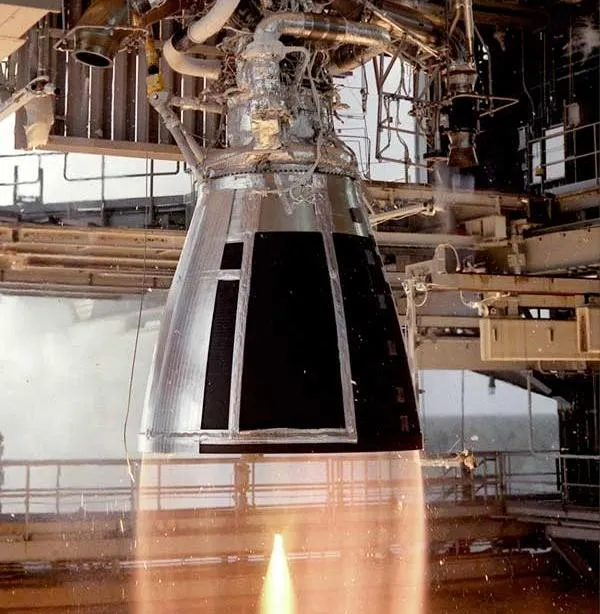
Conventional Rockets: These create thrust by burning a chemical propellant stored inside, either a solid or liquid fuel. The energy released as a result of this combustion lifts a craft out of Earth’s gravitational field and into space.
Pros: Rocket technology is well-established and well-understood, as it dates to ancient China and has been used since the very beginning of the space age. In terms of distance, its greatest achievement thus far is carrying the Voyager 1 space probe to the outer edge of the solar system, roughly 18.5 billion miles away from Earth.
Cons: The Voyager 1 is projected to run out of fuel around the year 2040, an indication of how limited in range conventional rockets and thrusters can carry a spacecraft. Moreover, even if we could fit a sufficient amount of rocket fuel onto a spacecraft to carry it all the way to another star, the staggering fact is that we likely don’t even have enough fuel on our entire planet to do so. Brice Cassenti, a professor at Rensselaer Polytechnic Institute, told Wired that it would take an amount of energy that surpasses the current output of the entire world to send a craft to the nearest star using a conventional rocket.
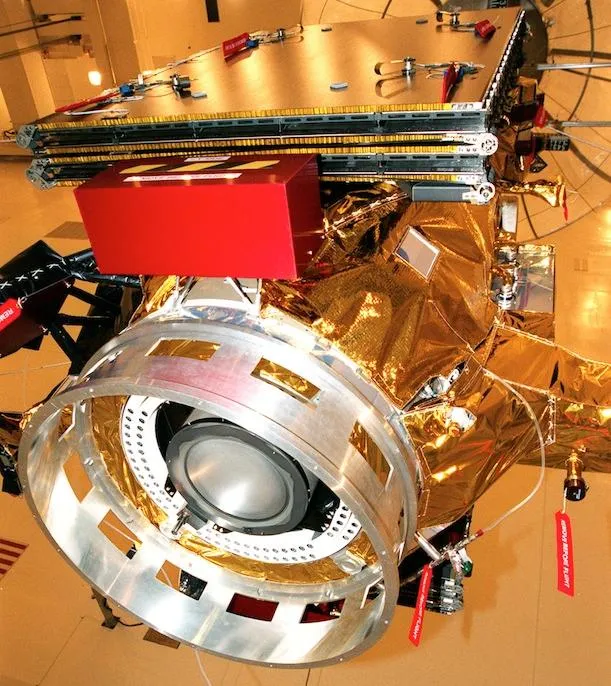
Ion engines: These work somewhat like conventional rockets, except instead of expelling the products of chemical combustion to generate thrust, they shoot out streams of electrically-charged atoms (ions). The technology was first successfully demonstrated on NASA’s 1998 Deep Space 1 mission, in which a rocket closely flew past both an asteroid and a comet to collect data, and has since been used to propel several other spacecraft, including an ongoing mission to visit the dwarf planet Ceres.
Pros: These engines produces much less thrust and initial speed than a conventional rocket—so they can’t be used to escape the Earth’s atmosphere—but once carried into space by conventional rockets, they can run continuously for much longer periods (because they use a denser fuel more efficiently), allowing a craft to gradually build up speed and surpass the velocity of one propelled by a conventional rocket.
Cons: Though faster and more efficient than conventional rockets, using an ion drive to travel to even the nearest star would still take an overwhelmingly long time—at least 19,000 years, by some estimates, which means that somewhere on the order of 600 to 2700 generations of humans would be needed to see it through. Some have suggested that ion engines could fuel a trip to Mars, but interstellar space is probably outside the realm of possibility.
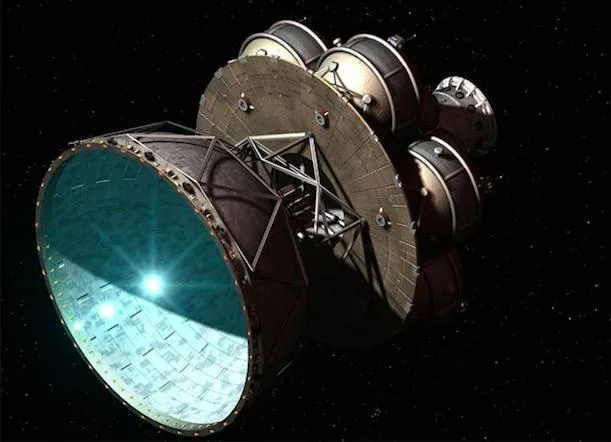
Nuclear Rockets: Many space exploration enthusiasts have advocated for the use of nuclear reaction-powered rockets to cover vast distances of interstellar space, dating to Project Daedalus, a theoretical British project that sought to design an unmanned probe to reach Barnard’s Star, 5.9 light-years away. Nuclear rockets would theoretically be powered by a series of controlled nuclear explosions, perhaps using pure deuterium or tritium as fuel.
Pros: Calculations have shown that a craft propelled in this way could reach speeds faster than 9000 miles per second, translating to a travel time of roughly 130 years to Alpha Centurai, the star nearest the Sun—longer than a human lifetime, but perhaps within the realm of a multi-generational mission. It’s not the Millenium Falcon making the Kessel Run in less than 12 parsecs, but it’s something.
Cons: For one, nuclear-powered rockets are, at present, entirely hypothetical. In the short-term, they’ll probably stay that way, because the detonation of any nuclear device (whether intended as a weapon or not) in outer space would violate the Partial Nuclear Test Ban Treaty, which permits such explosions in exactly one location: underground. Even if legally permitted, there are enormous safety concerns regarding the launch of a nuclear device into space atop a conventional rocket: An unexpected error could cause radioactive material to rain across the planet.
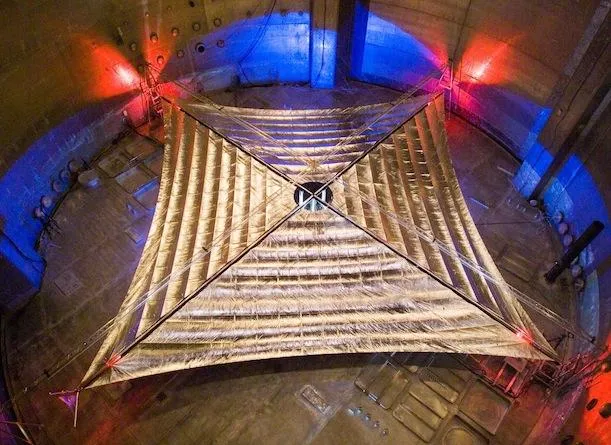
Solar Sails: In comparison to all the other technologies on this list, these operate on a rather different principle: Instead of propelling a craft by burning fuel or creating other sorts of combustion, solar sails pull a vehicle by harnessing the energy of the charged particles ejected from the Sun as part of the solar wind. The first successful demonstration of such a technology was Japan’s IKAROS spacecraft, launched in 2010, which traveled towards Venus and is now journeying towards the Sun, and NASA’s Sunjammer, seven times larger, is going to launch in 2014.
Pros: Because they don’t have to carry a set amount of fuel—instead using the power of the Sun, much like a sailboat harnesses the energy of the wind—a solar sail-aided spacecraft can cruise more-or-less indefinitely.
Cons: These travel much slower than rocket-powered crafts. But more important for interstellar missions—they require the energy ejected from the Sun or another star to travel at all, making it impossible for them to traverse the vast spaces between the reach of our Sun’s solar wind and that of another star system’s. Solar sails could potentially be incorporated into a craft with other means of propelling itself, but can’t be relied upon alone for an interstellar journey.
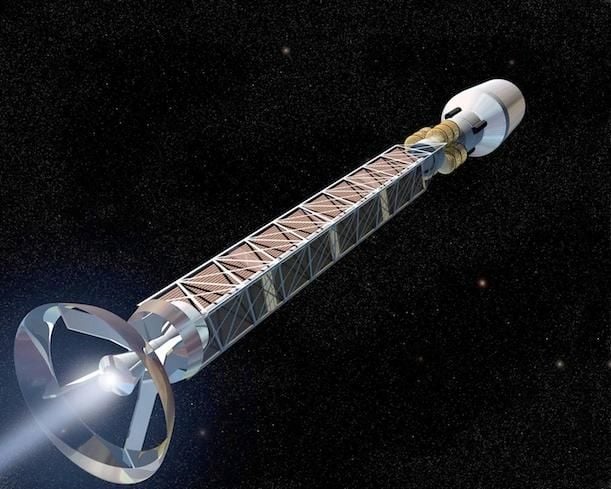
Antimatter Rockets: This proposed technology would use the products of a matter-antimatter annihilation reaction (either gamma rays or highly-charged subatomic particles called pions) to propel a craft through space.
Pros: Using antimatter to power a rocket would theoretically be the most efficient fuel possible, as nearly all of the mass of the matter and antimatter are converted to energy when they annihilate each other. In theory, if we were able to work out the details and produce enough antimatter, we could build a spacecraft that travels at speeds nearly as fast as that of light—the highest velocity possible for any object.
Cons: We don’t yet have a way to generate enough antimatter for a space journey—estimates are that a month-long trip to Mars would require about 10 grams of antimatter. To date, we’ve only been able to create small numbers of atoms of antimatter, and doing so has consumed a large amount of fuel, making the idea of an antimatter rocket prohibitively expensive as well. Storing this antimatter is another issue: Proposed schemes involve the use of frozen pellets of antihydrogen, but these too are a far way off.
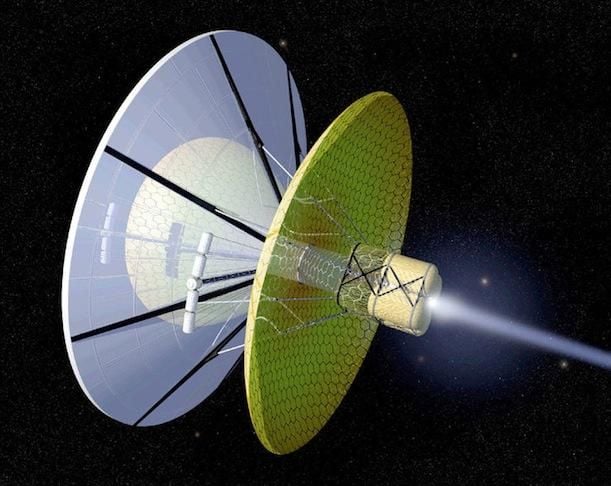
More speculative technologies: Scientists have proposed all sorts of radical, non-rocket-based technologies for interstellar travel. These include a craft that would harvest hydrogen from space as it travels to use in a nuclear fusion reaction, beams of light or magnetic fields shot from our own Solar System at a distant spacecraft that would be harnessed by a sail, and the use of black holes or theoretical wormholes to travel faster than the speed of light and make an interstellar journey possible in a single human’s lifetime.
All of these are extremely far away from implementation. But, if we do ever make it to another star system at all (a big if, to be sure), given the problems with most existing and near-future technologies, it might indeed be one of these pie-in-the-sky ideas that carry us there—and perhaps allow us to visit a habitable exoplanet.
/https://tf-cmsv2-smithsonianmag-media.s3.amazonaws.com/accounts/headshot/joseph-stromberg-240.jpg)
/https://tf-cmsv2-smithsonianmag-media.s3.amazonaws.com/accounts/headshot/joseph-stromberg-240.jpg)